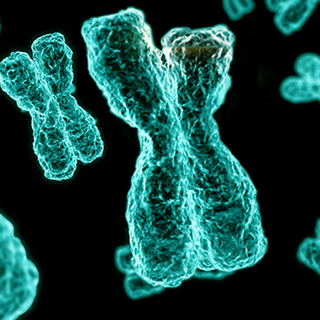
Chronic Pelvic Pain is More Than Just Period Cramps
Persistent pain down below is an overlooked symptom of disorders like endometriosis, pelvic floor dysfunction and many more.

“I don’t remember the last time I was pain-free. Three years ago, one day at work, I felt like a thousand knives are constantly stabbing me in the stomach. Since then, I’ve constantly lived in the same amount of pain, rarely lesser,” says media professional Sayali Kuradkar, 33, of Mumbai. “And on my periods, it gets worse. I have to take multiple painkillers a day, and I’ve also ended up in hospitals a couple of times to manage the pain.”
Khyati Das, a 36-year-old banker, also of Mumbai, has had a similar experience. “I used to love dancing until seven years ago when the pain in my pelvis got unbearable. I had no idea pelvic pain could cripple one’s life. I had to give up dancing. I was on the verge of giving up my job, too,” she says.
Both Kuradkar and Das suffer from what is known as chronic pelvic pain. The U.S.-based National Centre for Biotechnology Information (NCBI) identifies it as a debilitating condition, one that can have a major impact on quality of life and work productivity. While chronic pelvic pain can occur in people of all genders, is more common among women, and roughly affects 2.1% to 24% of them worldwide, according to a 2013 review of research.
But here’s the real problem: Two-thirds of patients with chronic pelvic pain do not carry a definitive diagnosis, the study estimates. Here’s why:
A World Health Organization-sponsored study mentions that while chronic pelvic pain is an important cause of death among women, the condition is neglected due to a lack of research and consensus on its definition — thus making diagnosis difficult. However, over the years, with an increasing number of cases, a small but growing number of studies have defined chronic pelvic pain as a cyclical or non-cyclical pain in the pelvis that lasts six months or longer.
Related on The Swaddle:
Painful Sex Is a Real Medical Condition, But Doctors Often Miss, Dismiss It
Chronic pelvic pain is a problem. But dismissing it as period pain, and subsequently not identifying the right treatment would mean ignoring larger underlying problems, say doctors.
“[Chronic pelvic pain] may not have been identified as a disease in itself, but it can be a symptom of a single disease or a result of multiple conditions,” says gynecologist Dr. Mudrika Tripathi from Mumbai’s Mamta Maternity Home.
For instance, the pain could be a symptom of endometriosis, pelvic inflammatory disease (infection in the female reproductive organs), interstitial cystitis (chronic pain and pressure in the bladder area), pelvic floor dysfunction (inability to control muscles of the pelvic floor), adhesions, fibromyalgia (a musculoskeletal disorder), or a result of psychological factors such as depression or chronic stress.
“Despite advances in medicine and technology, we still lack diagnostic tools that could point us to the exact cause of the pain,” says Dr. Tripathi. “Often, the diagnosis is empirical, based on results from ultrasounds, blood tests or MRI scans, which don’t pinpoint to the real problem.”
Even results from a laparoscopy, which is considered the best way to diagnose the underlying issue, are not always accurate, she adds; a 2017 study states that even after a laparoscopic evaluation, up to 55% of women with chronic pelvic pain have no clear and definite pathological findings.
But in some cases, as in Kuradkar’s and Das’s, a laparoscopy works. A few months ago, each was diagnosed with severe endometriosis.
“I was put on oral contraceptive pills to manage the flow and on painkillers for pain, but it did nothing to my pelvic pain. And I wasn’t suggested a laparoscopy earlier because it is an invasive procedure and doctors often advise against it,” says Das.
Laparoscopy may also benefit teenage girls, who in this study underwent a laparoscopy to investigate their chronic pelvic pain. Of the 47 girls who complained of pain, 38% of them had endometriosis, 8% had genital tract malformations and 12% had other types of pathological problems. Still; 40% of the girls studied had no pelvic abnormalities detected.
But Dr. Vidya Shah, a gynecologist from Mumbai’s Motherhood Maternity Clinic, medical protocol stops doctors from performing a laparoscopy and potentially gaining insight to the cause of pain. “When adolescent girls complain of period pains, we can’t perform a laparoscopy as the first step because it is invasive. Therefore, there is often a delay in diagnosis,” she says. “And for those who are advised one, they get apprehensive that it’ll add to their pain rather than relieving it.”
Related on The Swaddle:
Some Doctors See Pain as Just a Symptom of Being Female
The first step in treating chronic pelvic pain for any woman, regardless of age, Dr. Shah says, is to take pain seriously. “The ‘thoda dard toh hoga‘ (it’ll only pain a little) attitude needs to go. We can’t normalize women’s pain and further push them to bear the pain in silence. In an atmosphere where period or pain related to it is not discussed openly, it’ll delay diagnosis even further,” she adds.
When women will come out and complain, it will add to the demand and force more research into the problem — and the discovery of ways to deal with it. For now, Dr. Tripathi says, doctors adopt a step-by-step treatment. First, they’ll rule out infection with basic tests, then advise pelvic exams, followed by ultrasounds and MRIs to get to the root of the problem. A laparoscopy will often be the last step, but if any abdominal scar tissue from a previous surgery is detected, then pelvic pain can’t be completely treated. “In that case, we counsel women on how to live with the pain,” says Dr. Tripathi.
But Kuradkar says, “In my case, none of the doctors I visited offered me any counselling on how to manage my pain or refer me to a pain management specialist.”
Dr. Shah agrees that there is a gap that needs to be addressed here. “There is a need for a supportive medical community in India and awareness for support groups like there is in the West. We can’t leave women to fend for themselves,” she says.
The emotional toll of chronic pelvic pain on the patient, family and health care providers, is immeasurable, as all parties involved become frustrated by the lack of progress in the management of this disorder. The signs and symptoms of chronic pelvic pain vary from patient to patient, with regard to location and intensity, and it could be a result of various underlying issues. In addition to identifying the problem and not dismissing it as the first step, Dr. Tripathi advises not to “rule out a multidisciplinary approach to get to the root of the problem.” She adds, “If the pain doesn’t subside after a visit to the gynecologist, it could be followed by a check-up with a urologist or other specialists because these problems are all related. Not only the doctors, but you should be aware, too.”
Anubhuti Matta is an associate editor with The Swaddle. When not at work, she's busy pursuing kathak, reading books on and by women in the Middle East or making dresses out of Indian prints.
Related


Untrending: CBD Oil Is Not a Cure‑All
